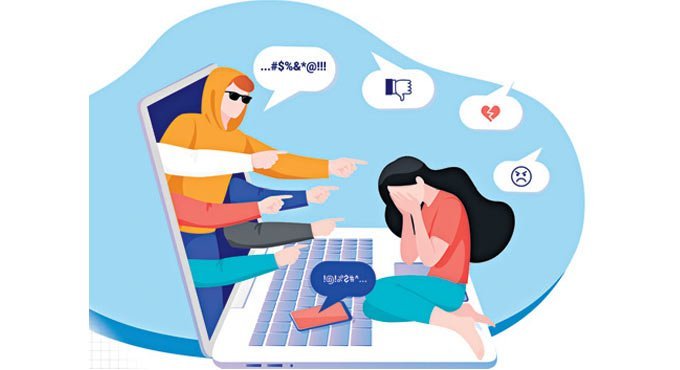Each of us has a social media account and its imperative that we should be safe and have a positive experience on social media. Here are some settings and tips to stay safe, active and aware on social media:
General Settings:
- Review Privacy Settings Regularly: Don’t rely on default settings. Social media platforms update them frequently, so it’s a good idea to check them every few months.
- Limit Profile Visibility: Make your profile and posts visible only to friends, or customize who can see them based on your comfort level.
- Control Who Can Contact You: Consider requiring approval for friend/follow requests or limit messages to friends only.
Sharing Settings:
- Be Mindful of What You Share: Avoid oversharing personal details like birthday, address, workplace, or relationship status.
- Limit Location Sharing: Disable live location sharing or geotagging on posts unless absolutely necessary.
- Review Tagged Posts: Control who can tag you and choose to approve tags before they appear on your profile.
Security Settings:
- Strong, Unique Passwords: Use complex passwords for each social media account and don’t reuse them anywhere else. Consider a password manager to help.
- Enable Two-Factor Authentication (2FA): This adds an extra layer of security by requiring a code from your phone or email when logging in from a new device.
- Beware of Third-Party Apps: Limit access given to third-party apps that connect to your social media accounts.
Keep in mind:
- Be Wary of Clicks: Don’t click on suspicious links or attachments in messages or posts.
- Social Media Hygiene: Regularly declutter your friend list and remove suspicious connections.
- Stay Informed: Keep yourself updated on social media privacy best practices and emerging threats.

How to Identify if Your Social Media Account is Hacked and What to do:
Signs of a Hacked Account:
- Unexpected Activity: This could be posts, comments, or likes you didn’t make. Pay attention to changes in your profile picture, bio, or friend list.
- Login or Email Changes: If you receive notifications about a password or email change you didn’t initiate, it’s a red flag.
- Security Alerts: The platform might send you notifications about suspicious login attempts.
What to Do If Your Account is Hacked:
- Change Your Password Immediately: Create a strong, unique password and don’t reuse it anywhere else.
- Sign Out of All Devices: This forces any unauthorized sessions to end. Log back in only on trusted devices.
- Enable Two-Factor Authentication (2FA): This adds an extra security layer to prevent unauthorized access even with your password.
- Report the Hack: Most social media platforms have reporting procedures for hacked accounts. Use them to notify the platform and potentially regain control.
- Scan for Malware: In case the hack resulted from malware infection, run a scan on your device to remove it.
- Warn Your Connections: Let your friends and followers know your account was compromised and to be wary of any suspicious messages coming from you.
If You See Any Suspicious Accounts While Using Social Media:
The exact steps to report and block suspicious accounts vary depending on the social media platform you’re using. However, the general process is quite similar across most platforms:
1. Identify the Platform:
First, figure out which social media platform the suspicious account is on (e.g., Facebook, Instagram, Twitter).
2. Locate the Suspicious Account:
Navigate to the profile of the account you want to report and block.
3. Find the Reporting Mechanism:
This option usually lies under “Help Center,” “Settings,” or “Security” on most platforms. Here’s a more specific breakdown:
- Facebook: Click the downward arrow at the top right corner, then select “Settings & Privacy” > “Settings” > “Privacy” > “Blocking.” You can also report the account from the profile itself.
- Instagram: Go to the profile you want to report. Tap the three dots (…) in the top right corner and select “Report.”
- Twitter: Click the three dots (…) on the suspicious user’s profile tweet and select “Report Tweet.” You can also report the account from the profile itself.
4. Follow Reporting Instructions:
Each platform will have its own specific instructions for reporting an account. These instructions will typically ask you to specify the reason for reporting the account (e.g., spam, impersonation, harassment). Provide any additional details that might be helpful.
5. Block the Account (Optional):
Once you’ve reported the account, consider blocking it as well. This prevents them from contacting you or viewing your profile. The blocking option is usually available on the same menu where you reported the account.
Here are some additional tips for dealing with suspicious accounts:
- Do not respond to messages from suspicious accounts.
- If you believe your account may have been compromised, report it to the platform immediately and change your password.
Beware of Fake Profiles Posing as Your Friends or Appearing on Your Social Media Feed:
Spotting fake social media profiles can be tricky, but here are some red flags to watch out for:
Profile Inconsistencies:
- Limited Information: Fake profiles often have minimal details, lacking a complete bio, workplace, or educational background.
- Stock Photos or Unrealistic Images: The profile picture might be a stock photo, a photo of a celebrity, or an image with suspiciously high quality or excessive editing.
- Mismatched Names: Pay attention to inconsistencies between the profile name, username, and the name mentioned in the bio.
Suspicious Activity:
- Inactivity or Limited Posts: A legitimate account would typically have some posts or activity history. Be wary of profiles with very few posts or a sudden surge of activity after a long period of inactivity.
- Unnatural Language: Posts with grammatically incorrect or nonsensical language might be a sign of a bot or someone using a translation tool.
- Spreading Misinformation or Extreme Views: Fake accounts are often used to spread propaganda or disinformation. Watch out for profiles that consistently share sensational or inflammatory content.
Followers and Following:
- Suspicious Followers: A high number of inactive or fake-looking followers (profiles with generic usernames, stock photos, or no posts) can be a giveaway.
- Uneven Following: The account might be following a large number of profiles but have very few followers themselves.
Friending Tactics:
- Out-of-the-Blue Friend Requests: Especially if you don’t have any mutual connections or the request seems random.
- Promises or Requests for Money or Personal Information: Fake accounts might try to lure you in with promises of wealth, romance, or other benefits, then ask for money or sensitive information.
Verification Badges:
- Absence of Verification Badge: Not all legitimate profiles have verification badges, but their absence on a high-profile account imitating a celebrity or influencer could be a sign of a fake.
Keep in Mind:
- Reverse Image Search: If you suspect a profile picture is fake, do a reverse image search using a search engine like Google Images to see if it appears elsewhere online.
- Search for the Person Elsewhere: Try searching for the person’s name on other social media platforms or a professional networking site like LinkedIn to see if their profiles match.
- Use Common Sense: If something seems too good to be true online, it probably is. Trust your gut feeling and avoid interacting with suspicious profiles.
What to do if You’re Being Harassed On Social Media:
Being harassed on social media with multiple fake profiles can be upsetting and feel overwhelming. Here’s what you can do to address the situation:

1. Document Everything:
- Gather Evidence: Take screenshots of harassing messages, posts, or profile information. Note down dates and times whenever harassment occurs.
- Report the Fake Accounts: Report each fake profile you identify using the platform’s built-in reporting function (refer to previous answer on how to report).
2. Block the Accounts:
- Block all the identified fake profiles to prevent further communication. This might not stop the harassment entirely, but it reduces interaction.
3. Increase Your Privacy Settings:
- Review and adjust your privacy settings to limit who can see your profile and posts. Consider making your profile and posts visible only to friends, or customizing who can see them based on your comfort level.
- Restrict who can contact you: Tighten your messaging settings to require approval for friend/follow requests or limit messages to friends only.
4. Don’t Engage with the Harasser:
- Responding can escalate the situation. It’s best to not respond to harassing messages or posts. This might be difficult, but it takes away the satisfaction the harasser seeks.
5. Report to the Platform:
- Most social media platforms have specific reporting procedures for harassment. File a report explaining the situation and detailing the evidence you collected (screenshots, dates, times).
6. Consider Legal Action:
- Depending on the severity of the harassment, it might be necessary to involve law enforcement. Save all your evidence and report the harassment to the police. They can assess if the situation meets the criteria for criminal charges like cyberstalking or harassment.
7. Seek Support:
- Don’t isolate yourself. Talk to a trusted friend, family member, or therapist about what’s happening. Having a support system can help you cope emotionally.
Dealing With Hate Comments and Cyber-Bullying:
Dealing with hate comments and cyberbullying can be tough, but here are some strategies to protect yourself and minimize their impact:
Don’t Engage:
- Often, the goal of cyberbullies is to get a reaction. The best course of action is to not respond. Responding can give them the satisfaction they crave and potentially escalate the situation.
- Ignore and delete: If the comments are mild, consider simply deleting them and moving on.
Protect Yourself:
- Report the abuse: Every social media platform has a reporting system. Use it to report the abusive accounts and the hateful comments themselves.
- Block the bullies: Block the accounts harassing you to prevent further communication.
- Increase privacy settings: Review your privacy settings and limit who can see your posts and contact you. Consider making your profile private or restricting messaging to friends only.
Seek Support:
- Talk to someone you trust: Don’t bottle up your feelings. Talking to a friend, family member, therapist, or counselor can help you deal with the emotional impact of cyberbullying.
- Report to authorities: If the harassment is severe, involves threats of violence, or is discriminatory, consider reporting it to the police. Save all your evidence (screenshots, dates, times) for reporting purposes.
Remember These Points:
- It’s not your fault: Cyberbullies often target people they don’t know. Their negativity is a reflection of them, not you.
- Focus on the positive: Don’t let the negativity define you. Surround yourself with supportive people and focus on positive online interactions.
- Take care of yourself: Cyberbullying can be stressful. Make sure you’re getting enough sleep, eating healthy, and doing things you enjoy to maintain your well-being.










